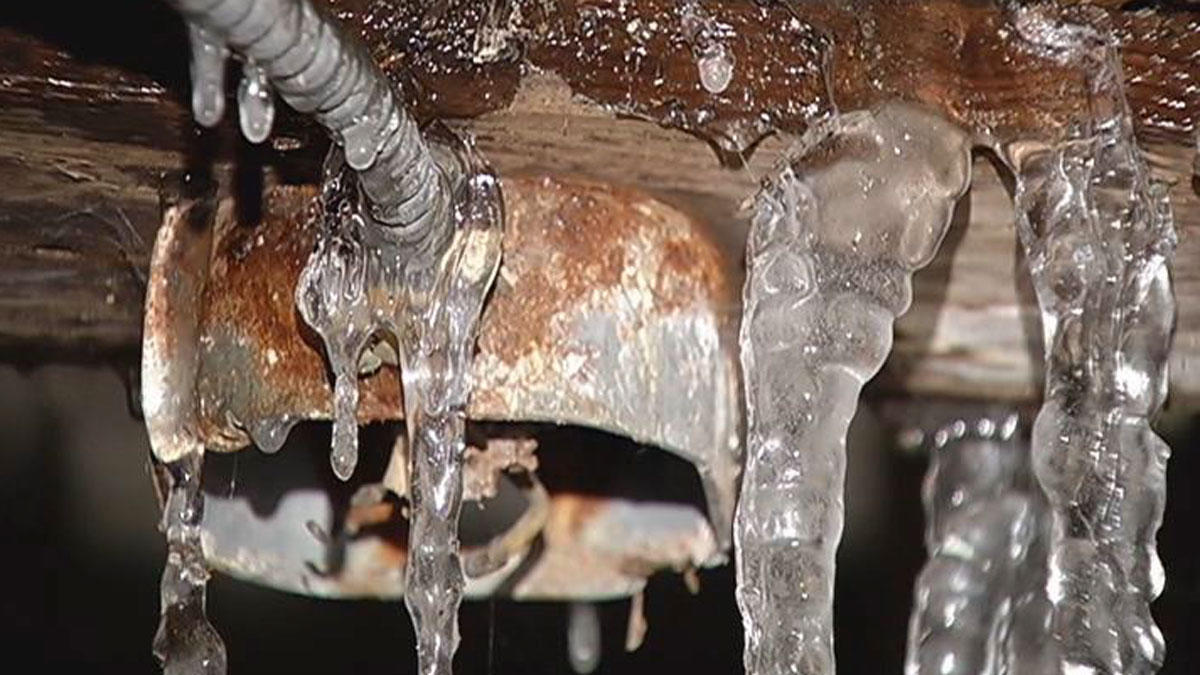Right here further down you will find a good deal of helpful content around How To Avoid Freezing Pipes.

Winter can damage your pipes, especially by freezing pipes. Here's how to prevent it from taking place and what to do if it does.
Introduction
As temperature levels decrease, the risk of frozen pipelines increases, potentially leading to costly repairs and water damages. Recognizing how to stop icy pipes is important for homeowners in cool climates.
Understanding Frozen Pipelines
What causes pipes to freeze?
Pipes ice up when revealed to temperatures below 32 ° F (0 ° C) for prolonged durations. As water inside the pipes ices up, it increases, putting pressure on the pipe wall surfaces and potentially triggering them to break.
Threats and problems
Frozen pipes can cause water disturbances, residential property damages, and expensive repairs. Burst pipelines can flood homes and trigger extensive architectural damage.
Indications of Frozen Pipeline
Recognizing frozen pipelines early can prevent them from bursting.
How to recognize icy pipelines
Try to find decreased water circulation from faucets, uncommon odors or sounds from pipes, and noticeable frost on exposed pipelines.
Prevention Tips
Protecting vulnerable pipelines
Wrap pipelines in insulation sleeves or use warmth tape to safeguard them from freezing temperatures. Concentrate on pipes in unheated or exterior locations of the home.
Home heating techniques
Keep indoor spaces effectively heated up, especially locations with pipes. Open closet doors to permit cozy air to flow around pipes under sinks.
Safeguarding Outside Pipes
Garden pipes and outside taps
Separate and drain pipes garden hoses before winter months. Install frost-proof faucets or cover outdoor faucets with shielded caps.
What to Do If Your Pipelines Freeze
Immediate actions to take
If you believe frozen pipelines, maintain taps open to ease pressure as the ice melts. Utilize a hairdryer or towels taken in warm water to thaw pipelines slowly.
Long-Term Solutions
Structural modifications
Think about rerouting pipes away from outside wall surfaces or unheated areas. Include added insulation to attic rooms, cellars, and crawl spaces.
Upgrading insulation
Invest in premium insulation for pipes, attic rooms, and walls. Correct insulation assists maintain regular temperatures and lowers the danger of icy pipes.
Conclusion
Stopping frozen pipelines calls for proactive steps and fast responses. By comprehending the reasons, indications, and preventive measures, property owners can shield their plumbing throughout winter.
5 Ways to Prevent Frozen Pipes
Drain Outdoor Faucets and Disconnect Hoses
First, close the shut-off valve that controls the flow of water in the pipe to your outdoor faucet. Then, head outside to disconnect and drain your hose and open the outdoor faucet to allow the water to completely drain out of the line. Turn off the faucet when done. Finally, head back to the shut-off valve and drain the remaining water inside the pipe into a bucket or container. Additionally, if you have a home irrigation system, you should consider hiring an expert to clear the system of water each year.
Insulate Pipes
One of the best and most cost-effective methods for preventing frozen water pipes is to wrap your pipes with insulation. This is especially important for areas in your home that aren’t exposed to heat, such as an attic. We suggest using foam sleeves, which can typically be found at your local hardware store.
Keep Heat Running at 65
Your pipes are located inside your walls, and the temperature there is much colder than the rest of the house. To prevent your pipes from freezing, The Insurance Information Institute suggests that you keep your home heated to at least 65 degrees, even when traveling. You may want to invest in smart devices that can keep an eye on the temperature in your home while you’re away.
Leave Water Dripping
Moving water — even a small trickle — can prevent ice from forming inside your pipes. When freezing temps are imminent, start a drip of water from all faucets that serve exposed pipes. Leaving a few faucets running will also help relieve pressure inside the pipes and help prevent a rupture if the water inside freezes.
Open Cupboard Doors
Warm your kitchen and bathroom pipes by opening cupboards and vanities. You should also leave your interior doors ajar to help warm air circulate evenly throughout your home.

We had been made aware of that article on 6 Ways to Prevent Frozen Pipes from a buddy on our other web blog. Are you aware of somebody else who is in the market for Prevent Frozen Pipes ? Feel free to promote it. We value reading our article about Preventing and dealing with frozen pipes.
Book An Estimate Now